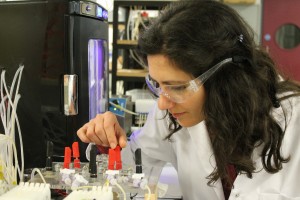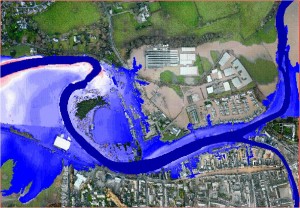 WP2 will develop and implement a coupled modelling framework of agricultural landscape response to climate ‘shocks’, focusing on the rich historical events and responses in the Somerset Levels. Activities will consist of controlled laboratory experiments, field monitoring and numerical modelling, focusing on the interaction between soil, water and agricultural landscape change under specific climate ‘shocks’.
WP2 will develop and implement a coupled modelling framework of agricultural landscape response to climate ‘shocks’, focusing on the rich historical events and responses in the Somerset Levels. Activities will consist of controlled laboratory experiments, field monitoring and numerical modelling, focusing on the interaction between soil, water and agricultural landscape change under specific climate ‘shocks’.
Miscanthus, a bioenergy crop with the biggest planting area in the UK, will be used in landscape change scenarios. Miscanthus is a plausible alternative to traditional crops in Somerset due to its flood-prone nature.
Laboratory experiments will evaluate: (i) the impact of ‘shocks’ on different varieties of perennial bioenergy grass,Miscanthus; (ii) the soil rehabilitation potential of Miscanthus following shocks; and (iii) the projected yield potential on flood-prone land.
The impact of flooding on soil nutrition, microbial communities and their recovery rates will be monitored with the use of novel microbial biosensors. Field monitoring will provide soil physical and chemical properties corresponding to wet and dry conditions (continuous depth measurements using wireless sensors) at multiple sites on flood-prone agricultural land.
Numerical modelling of hydrological and hydraulic processes will be integrated with crop growth models, parameterized by the empirical rules of soil, water and crop interaction, derived from experimental studies and existing literature. A scenario-based modelling framework of agricultural landscape response to climate ‘shocks’ will be developed, incorporating plausible adaptation and intervention measures (e.g. dredging, tidal barrier, return to natural wetland) within a dynamic and evolving agricultural landscape (e.g. changing crop types and soil properties). A decision support tool will be developed to implement the framework through controlled ‘shocks’ and scenario-based ‘adaptations’ for system ‘vaccination’. Scenario-based results of impacts will be integrated in WP3.
A scenario-based modelling framework of agricultural landscape response to climate ‘shocks’ will be developed, incorporating plausible adaptation and intervention measures (e.g. dredging, tidal barrier, return to natural wetland) within a dynamic and evolving agricultural landscape (e.g. changing crop types and soil properties). A decision support tool will be developed to implement the framework through controlled ‘shocks’ and scenario-based ‘adaptations’ for system ‘vaccination’. Scenario-based results of impacts will be integrated in WP3.
The objectives of this workpackage are:
Developing innovative biosensors to monitor soil recovery after shocks
- Assessing plant and soil recovery after given shocks
- Learning from historical events and evaluating existing interventions/adaptations:
- Field monitoring and surveys:
- Developing a modelling framework of agricultural landscape response to ‘shocks’
- Implementing ‘shock’ scenarios within the modelling framework to evaluate the physical, environmental and economic impacts of climate shocks
